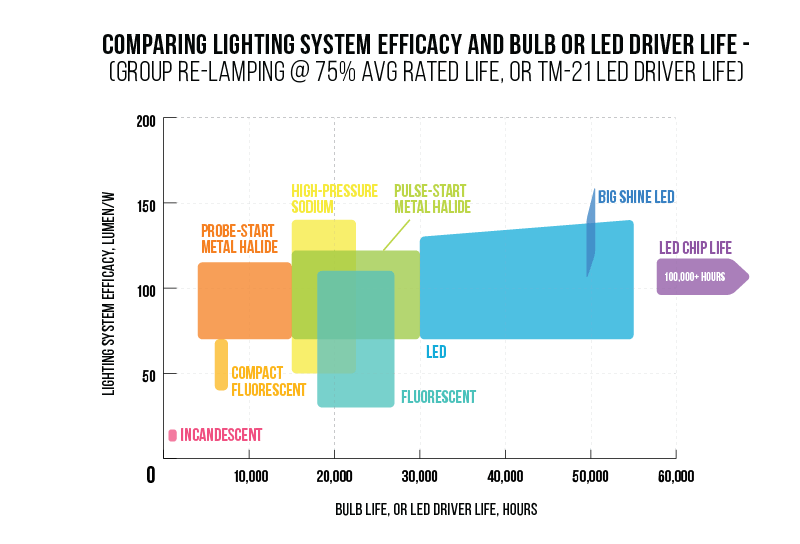50,000 Hours or 360,000 Hours?
As LED technology becomes more popular, everyone knows that LED lights are more energy efficient and have a longer lifetime than traditional lighting.
You might have come across lighting companies offering you LED fixtures promising that they last 360,000 hours. For example, one brochure that I came across stated, “Fixture life is up to 361,000 hours.” This is over 41 years of continuous operation!
Meanwhile, Big Shine Energy is offering you LED fixtures that last 50,000 hours. Why the difference?
While LED lights indeed last longer, it’s important to look at a fixture’s expected lifespan by evaluating LED lighting as a system with several components. Whatever component of the system has the shortest life will determine the lifespan that is usable and economical for you.
What other companies fail to explain is that their prediction is based only on the LED chip itself and does not include the electronic driver or any other component. Of course, all LED chips, including Big Shine LED chips, can last well over 100,000 hours, especially at only 77º F, which is the most benign.
However, the lifespan of the driver is much lower than the LED chip. The driver is the heart of the LED light, and driver life can range from 10,000 to over 50,000 hours, depending on the design features, heat sink efficiency, capacitor construction, and overall quality.

The above graph compares the lifespans of various types of lighting. All LED chips can last more than 100,000 hours, but that has no bearing on the lifespan of the luminaire itself.
While advertising 360,000+ hours may be attractive to customers now, down the road, they will suffer a loss because the company’s actual warranty won’t match such a wild claim.
At Big Shine LED, we view the lighting system as a full-service program, including giving you honest estimates of life, and providing guidance regarding factors that can lead to premature dimming or failure. And our warranty matches the transparency in our product advertising!The above is a summary of “Honest Talk about LED Lighting System Life” by Big Shine LED CTO August Kruesi. Read or download the full article here.








